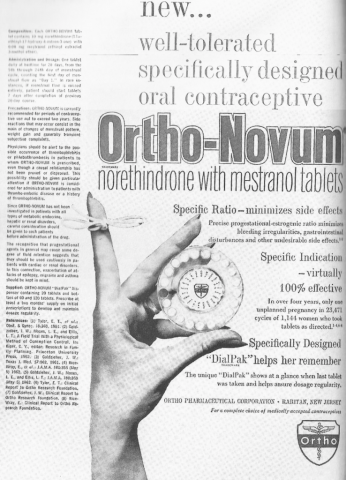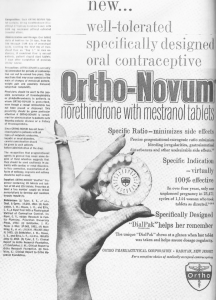Five Paradoxes of the Sexual Revolution, Part I

St. Therese of Lisieux, Pope Benedict & The Miracle at Lourdes (A Story)
February 12, 2018
Ignoring Human Rights Abuses, Mainstream Media Gush Over North Korea’s ‘Charm’
February 12, 2018
By Mary Eberstadt, The Catholic Thing, Feb. 10, 2018
Note: Our colleague Mary Eberstadt gave one of the papers at Hillsdale College’s conference “The Sixties” on January 30. It’s a striking enough argument, especially given the emerging attacks on Humanae Vitae in this fiftieth anniversary year, that we thought our readers should have it in full. Because of the length of the text, however, we’re running it here, in slightly edited form, and in two pieces. The first half today; the remaining three paradoxes next Saturday. – Robert Royal
![]() Academics vary about their definitions of the sexual revolution, but here’s one straightforward, uncontroversial formula. The “revolution” refers to the changes in sexual behavior and mores following the widespread adoption and approval of reliable contraception over a half-century ago. The first accelerant here is the birth control pill, approved by the FDA in 1963, and widely dispersed in the population thereafter. The second accelerant is the legalization of abortion on demand in 1973 via Roe v. Wade – a development that approval of the Pill made all but inevitable. Modern contraception and legalized abortion changed not only behavior but also attitudes. Around the world, social tolerance of non-marital sex in all its forms has risen alongside these other changes, for logical reasons that I’ve talked about elsewhere, including in my book Adam and Eve after the Pill.
Academics vary about their definitions of the sexual revolution, but here’s one straightforward, uncontroversial formula. The “revolution” refers to the changes in sexual behavior and mores following the widespread adoption and approval of reliable contraception over a half-century ago. The first accelerant here is the birth control pill, approved by the FDA in 1963, and widely dispersed in the population thereafter. The second accelerant is the legalization of abortion on demand in 1973 via Roe v. Wade – a development that approval of the Pill made all but inevitable. Modern contraception and legalized abortion changed not only behavior but also attitudes. Around the world, social tolerance of non-marital sex in all its forms has risen alongside these other changes, for logical reasons that I’ve talked about elsewhere, including in my book Adam and Eve after the Pill.
Except for the Internet, it’s hard to think of any other single phenomenon since the 1960s that has re-shaped humanity around the world as profoundly as this particular revolution. Some of the resulting record is very well known indeed: four years ago, on the 50th anniversary of approval of the birth control pill, there was an outpouring of commentary and reflection, most of it in a positive vein. The revolution, it was claimed – and acclaimed – by TIME magazine and most other secular sources, had leveled the playing field in the economic marketplace between women and men for the first time in history; it had conferred freedom on women such as they’d never known before.
All true, so far as it goes. But there’s another side of the record that’s been mostly ignored by a mainstream society saturated with the revolution’s pleasures. With every passing year, more evidence accumulates that must someday change that predominant, happy storyline. Towards that end, I would like to discuss five ways in which the revolution has re-configured human reality as we know it, five seeming paradoxes that point to the revolution’s power – in particular, to its awe-inspiring destructive power.
Let’s start with a little story that captures the scale of change. I grew up in a series of small towns scattered across beautiful and forbidding upstate New York – north of the Hudson River Valley, a planet away from New York City, in the area known as the Leatherstocking Region because author James Fenimore Cooper set his classic American stories there. This was, and still is, rural, blue-collar country. It was the kind of place where more local boys in the Sixties went to Vietnam than to college. In many ways, a lot about this area is still the same – with one massive exception, which we’ll call the family thing.
In the 1960s, most men in this area worked as manual laborers, mainly on farms or in local copper and silver mills. Many women, if married, stayed home. Most families were still intact – religious and non-religious alike. This was not a particularly observant area; the majority of residents were Mainline Protestants, less than 10 percent were Catholic, and the local churches weren’t noticeably overflowing on Sundays.
One of my enduring memories from those years: In 1972, just months before the legalization of abortion, a teenage girl down the street became pregnant. The baby’s father was a young soldier, newly returned from the war. The town gossips were up in arms – because he didn’t plan to marry the girl. In those days, that was considered shocking. Although pregnant brides were hardly unknown, even teenaged brides, men who didn’t marry pregnant girlfriends were objects of opprobrium. So tongues wagged, and not in a good way.
Eventually, this girl had the baby somewhere else, where adoption followed. She came back and finished high school – to my knowledge, without social stigma. But the stigma that does remain memorable was the other one: against her boyfriend. The idea that he should have taken responsibility, which the majority of adults in that era and place believed, is an idea that’s vanished into the wind of the revolution.
Now fast-forward some twenty years. In the early 1990s, I went back, and met with a former teacher. She estimated that among that year’s 200 high-school seniors, around one-third of the girls were pregnant. Not one was married. And doubtless there were other pregnancies besides the visible ones; various girls were also rumored to have gotten abortions.
Here’s the take-away. From one scandalous pregnancy in a rural public high school in the 1970s, to many non-scandalous pregnancies in that same school by the 1990s: that’s one snapshot showing how the sexual revolution has transformed the world.
Which leads us to the first of several paradoxes about that revolution:
Paradox One: If the foundation of the revolution was the availability of cheap, reliable birth control, why the unprecedented rise in both abortions and pregnancies outside of marriage?
 But the empirical record since the 1960s shows their logic to be wrong: rates of contraception, abortion, and out-of-wedlock births all exploded simultaneously.This is a profoundly important question. After all, when contraception became commonplace, many people of good will defended it precisely because they thought it would render abortion obsolete. Margaret Sanger is one prominent example. She called abortion “barbaric” and argued that contraception would put abortion out of business. Planned Parenthood has gone on to claim her as its patron saint. She was making what might seem like a commonsense point: reliable contraception would prevent abortion. A great many people, both before and after the Sixties, have believed something similar.
But the empirical record since the 1960s shows their logic to be wrong: rates of contraception, abortion, and out-of-wedlock births all exploded simultaneously.This is a profoundly important question. After all, when contraception became commonplace, many people of good will defended it precisely because they thought it would render abortion obsolete. Margaret Sanger is one prominent example. She called abortion “barbaric” and argued that contraception would put abortion out of business. Planned Parenthood has gone on to claim her as its patron saint. She was making what might seem like a commonsense point: reliable contraception would prevent abortion. A great many people, both before and after the Sixties, have believed something similar.
Over twenty years ago, a group of economists spelled out the dynamics of these simultaneous explosions with admirable clarity:
Before the sexual revolution, women had less freedom, but men were expected to assume responsibility for their welfare. Today women are more free to choose, but men have afforded themselves the comparable option. “If she is not willing to have an abortion or use contraception,” the man can reason, “why should I sacrifice myself to get married?” By making the birth of the child the physical choice of the mother, the sexual revolution has made marriage and child support a social choice of the father.
In other words, contraception led to more pregnancy and more abortion because it eroded the so-called shotgun wedding, or the idea that men had equal responsibility for an unplanned pregnancy.
Another interesting theory about why contraception failed to prevent abortion comes from Scott Lloyd, writing in the National Catholic Bioethics Quarterly. Using studies and statistics from the abortion industry itself, he (like others) argues that contraception leads to abortion – not inevitably in individual cases, of course, but repeatedly and reliably as twinned social phenomena:
The bottom line is this: contraceptives do not work as advertised, and their failure is at the heart of the demand for abortion. Contraception enables sexual encounters and relationships that would not have happened without it. In other words, when couples use contraception, they agree to sex when pregnancy would be a problem. This leads to a desire for abortion.
There are other efforts within social science, and elsewhere, to explain this same paradox; but the larger point stands: contrary to what a majority would likely have guessed in the Sixties, abortion and unplanned pregnancies have both proliferated, despite contraception.
Many people present at the creation of the revolution couldn’t have anticipated its paradoxical consequences. Many, operating in good faith, hoped that humanity would master these new technologies and that they’d prove to be social goods. But those of us alive today, by stark contrast, possess a wealth of empirical evidence accumulated for decades now. And we can see through perfectly secular social science that the revolution’s story took a darker turn.
Paradox Two: The sexual revolution was supposed to liberate women. Yet simultaneously, it has become harder to have what most women say they want: marriage and a family.
This is not a biased way of phrasing the point. Women from across the political spectrum agree that marrying and mating for life has become more difficult than it used to be. This is one reason why we have commercial surrogacy and egg-freezing now – in the case of egg freezing, with the enthusiastic endorsement of corporate America. The purpose of these innovations – besides corporate profit from uninterrupted careerism – is to extend the horizon of natural fertility, so that women are freer to stay in the workplace and have time to find husband and family. The purported idea – like the idea behind widespread contraception and abortion on demand – is to empower women, put them in control.
Yet paradoxically, many women find themselves less able than ever to get married, stay married, and have a family – all of which the vast majority of women still describe as their highest goals. This preoccupation echoes across media and social media, in headlines like “Eight Reasons Why New York Women Can’t Find a Husband” (New York Post); or “Why College-Educated Women Can’t Find Love” (The Daily Beast); or many other stories worrying about today’s women and the marriage question.
Economists have uncovered the reality behind these apprehensions, all further fallout from the revolution. In his book Cheap Sex: The Transformation of Men, Marriage, and Monogamy, sociologist Mark Regnerus has used the tools of economics to explain the post-revolutionary sexual market, aided by a formidable supply of new data.
The essence of his argument is this:
To plenty of women, it appears that men have a fear of commitment. But men, on average, are not afraid of commitment. The story is that men are in the drivers’ seat in the marriage market and are optimally positioned to navigate it in a way that privileges their (sexual) interests and preferences.
In other words, the same force that eroded the shotgun wedding has gone on to empower men, not women.
One of the economists cited by Mark Regnerus, Timothy Reichert, wrote a similar analysis of the revolution, “Bitter Pill,” in First Things. Reichert argued using data from the 1960s onward that the “revolution has resulted in a massive redistribution of wealth and power from women and children to men.” He specifies further: “More technically, artificial contraception sets up what economists call a ‘prisoner’s-dilemma’ game, in which each woman is induced to make decisions rationally that ultimately make her, and all women, worse off.”
Obviously, we’re not speaking here of the deliberately countercultural movements and communities that have banded together to oppose the revolution since the Sixties. The focus instead is on the going cultural narrative in non-religious precincts – the kinds of places where the revolution isn’t regarded as problematic. (Yet.)
And in that world, which is now the cultural mainstream, the fact that a lot of men aren’t settling down, marrying, and starting families is a constant, fretful preoccupation. It’s why the phrase “Peter Pan syndrome” was coined in the Eighties. It’s why “failure to launch” is common shorthand today. It’s why “manolescent” became a noun in Urban Dictionary.
All of these additions to the vernacular have the same origin, which is a diminished incentive for men to marry, due to the flooded sexual marketplace of potential partners – “cheap sex,” as the title has it. This outcome, too, is not one that people who cheered the revolution on in the Sixties foresaw. And there were others.
To be continued.
____________________
*Image: 1963 Ortho-Novum ad for the Pill




